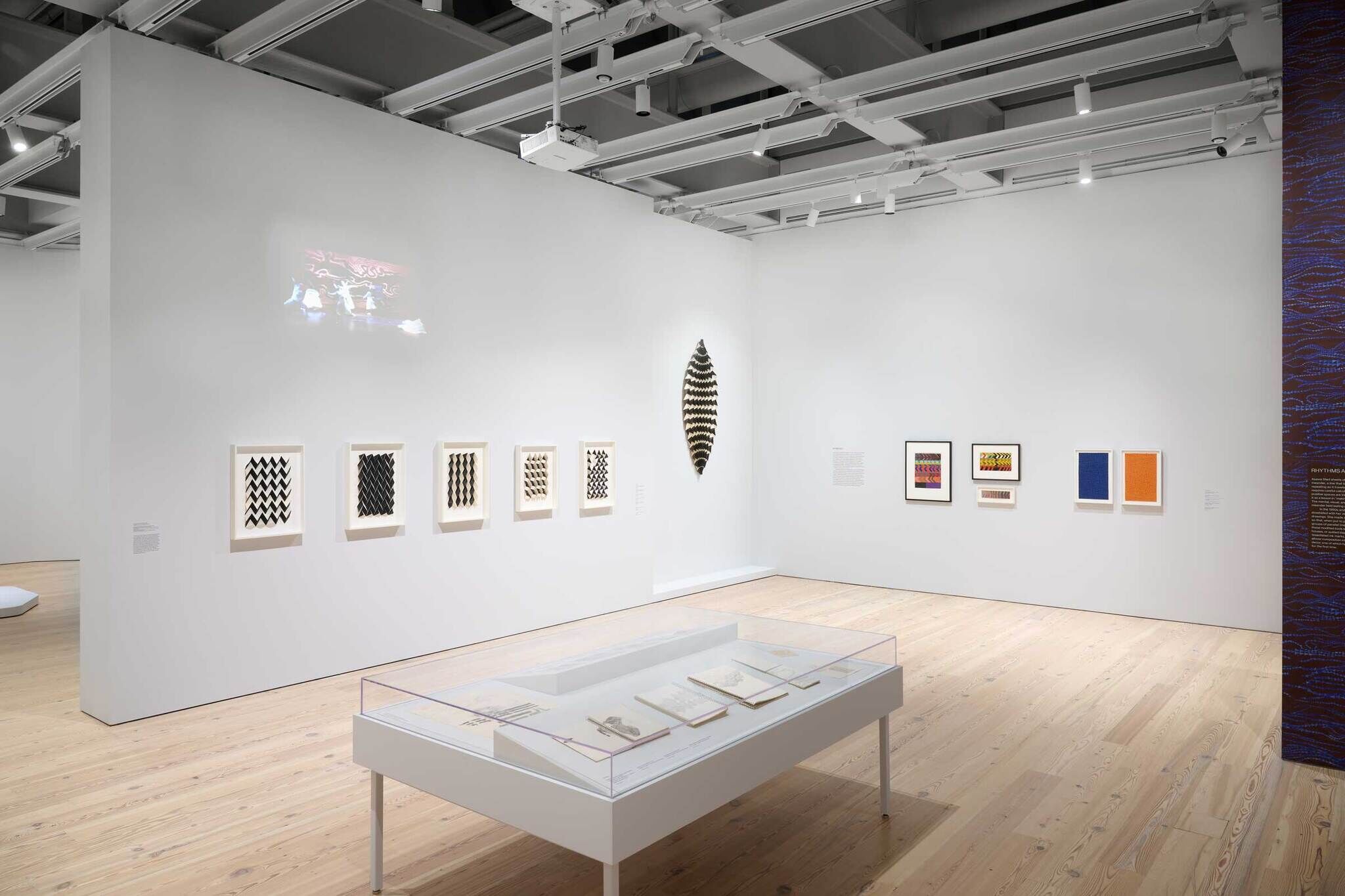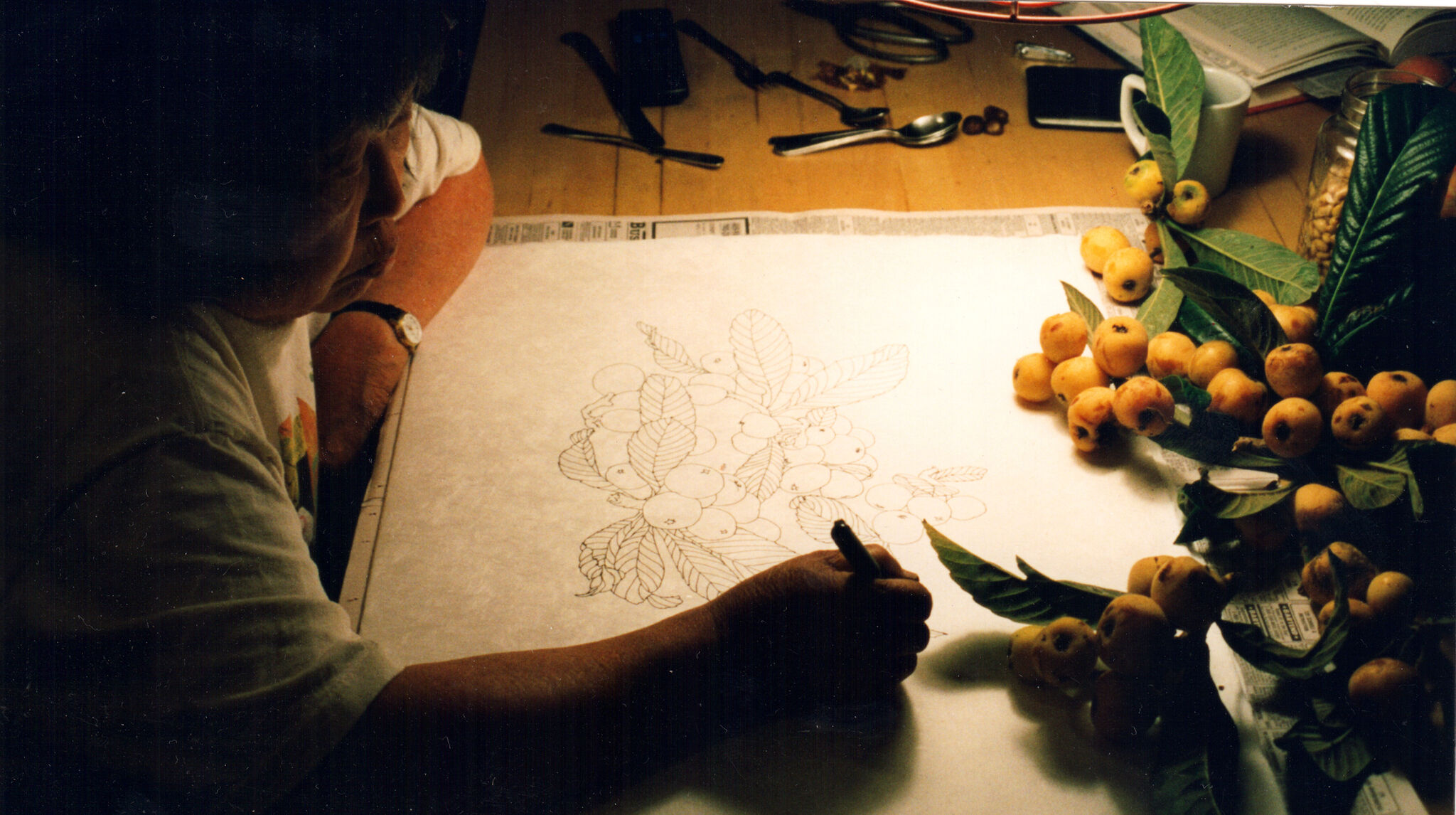Ruth Asawa Through Line
Sept 16, 2023–Jan 15, 2024
For Ruth Asawa (1926–2013), drawing served as a center of gravity—the activity she described as her "greatest pleasure and the most difficult." Although now widely recognized for her wire sculptures, Asawa drew daily. Her exploratory approach to materials, line, surface, and space yielded an impressive range of drawings that speaks to her playful curiosity and technical dexterity as well as her interest in the aesthetic possibilities of the everyday.
From her upbringing on her family's farm in Southern California, where Asawa dreamily traced shapes along dirt roads in between chores and attended weekly calligraphy lessons, drawing became the foundation of her creative life. When her family was forced to leave their home in 1942 as part of the US government's World War II isolation policies toward Japanese Americans, the teenage Asawa found salvation in the artists who taught and supported each other in the incarceration camps. In the years that followed, as a student at the progressive Black Mountain College and throughout six decades in San Francisco, Asawa maintained a belief in the power of art to bring about a better future. This ethos guided her work as an educator, community leader, and artist.
This exhibition highlights drawing as the through line in Asawa's work. Organized thematically and inspired by her inquisitive approach to making art, the presentation comprises more than one hundred works, many of which have never been exhibited. Together, they capture the boundless energy and generous spirit of Asawa, who believed that "art is not a series of techniques, but an approach to learning, to questioning, and to sharing."
This exhibition is co-organized by Kim Conaty, Steven and Ann Ames Curator of Drawings and Prints at the Whitney Museum of American Art, and Edouard Kopp, John R. Eckel, Jr. Foundation Chief Curator of the Menil Drawing Institute, with Scout Hutchinson, Curatorial Fellow at the Whitney Museum, and Kirsten Marples, Curatorial Associate at the Menil Drawing Institute. After the exhibition closes at the Whitney, it will travel to the Menil Drawing Institute in Houston.
Ruth Asawa Through Line is sponsored by

Generous support is provided by The Andy Warhol Foundation for the Visual Arts, Judy Hart Angelo, David Bolger and the Henry Luce Foundation.
Major support is provided by the Abrams Foundation; the Ellsworth Kelly Foundation in honor of the Ellsworth Kelly Centennial; the John R. Eckel, Jr. Foundation; the Jon and Mary Shirley Foundation; and Susan and Larry Marx.
Significant support is provided by Christie’s, Miyoung Lee and Neil Simpkins, The Lipman Family Foundation, Nancy and Fred Poses, and an anonymous donor.
Additional support is provided by Ann Ames, David Zwirner, Stephen Dull, Sheree and Jerry Friedman, and the Yurman Family Foundation.


Growth Patterns
6
Asawa's method of working outward from a central point, whether in concentric rings or diverging branches, began to take shape in the early 1960s. "I'm just interested in the way nature grows and structures," she explained, referring to the spiral or rippling patterns that inspired her. Drawings of tree rings, lettuces from her garden, and car headlights, demonstrate Asawa's concern for connectedness and consequence—how starting from a particular point has radiating implications.
Central to this approach are Asawa's tied-wire works, a project she began in 1962 when friends returned from a trip to Death Valley with a gift for the artist: a dried plant for her to draw. Challenged by rendering its entanglements in two dimensions, Asawa instead reached for wire to better grasp the plant's structural intricacies. Bundled at the center and dividing outward, her series of tied-wire sculptures emerged. Asawa then returned to paper in order to translate into line what she had learned through wire.
Mobile guides
Learn more about selected works from artists and curators.
View guideExhibition Catalogue
Ruth Asawa, widely known for her looped-wire sculptures, was an inveterate drawer. This volume is the first to consider the significance of drawing in Asawa’s oeuvre throughout her career, featuring essays that examine the range of Asawa’s aesthetic maneuvers across materials and techniques; how Asawa’s drawing intertwined with the Bay Area arts community and her contributions to public education as a teacher and organizer; and the influence of Josef Albers’s pedagogy and Asawa’s lifelong adoption of his type of paper folding. Tracing Asawa’s artistic journey from her first formal art lessons in a Japanese American internment camp during World War II through her time at Black Mountain College and beyond, this comprehensive overview of the artist’s drawings includes reproductions of more than one hundred works—many of which have never been published—organized into eight thematic sections that cut through time, reflecting an art-making practice that was more circular or cyclical than linear.
Buy nowIn the News
"Conaty shared that curating Ruth Asawa Through Line was not just about interfacing with wonderful artwork, but also about engaging with an inspiring life." —The Guardian
"…brings overdue attention to the artist’s work beyond her mesmerizing wire sculptures." —ARTnews
"Ruth Asawa: Through Line, at the Whitney in New York, is the first retrospective survey of her work on paper and reveals new depths to the artist." —The Washington Post
"By centering on her graphic works, the exhibition turns its attention from Asawa's well-known wire sculptures to place drawing at the heart of her practice…The exhibition signals a remarkable shift in the estimation of the medium's importance." —Ocula Magazine
"Ten years after her death, an artist still best known as a sculptor gets an extensive show of her sketchbooks, collages, folded paper, Greek meanders, drawings and works on gold foil." —The New York Times
"The pieces on display, many of them rarely exhibited, trace Asawa’s obsession with line, rhythm, and form to the simple pleasure of mark-making." —Hyperallergic
"The Whitney exhibition Ruth Asawa Through Line (Sept. 16) honors the artist’s daily drawing practice, highlighting the contemplations on paper of shape, light, and shadow—many made public here for the first time—which informed her airy and voluptuous wire sculptures."—The New Yorker
"...this exhibition traces the development of the American modernist sculptor’s distinctive visual vocabulary to her daily drawing practice." —Art in America
"From her formative years at Black Mountain College to her role as an educator, Asawa’s work invites us to find the extraordinary in the everyday." —Culture.org












